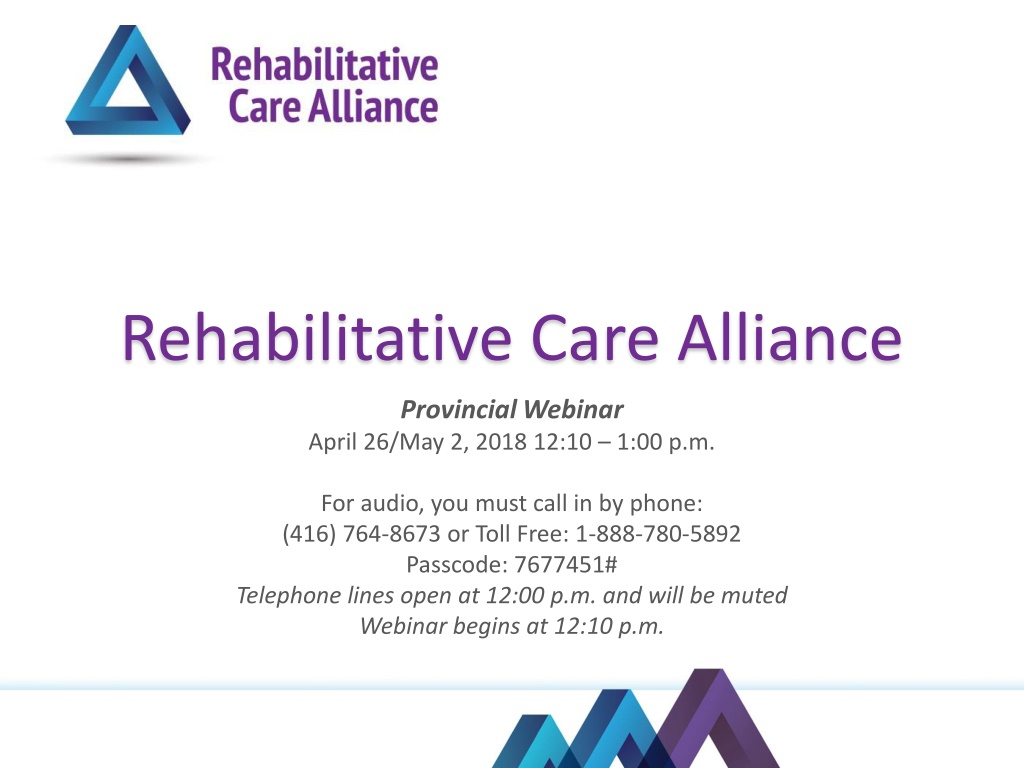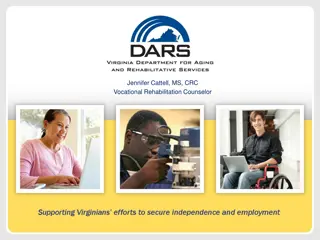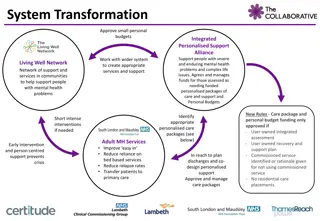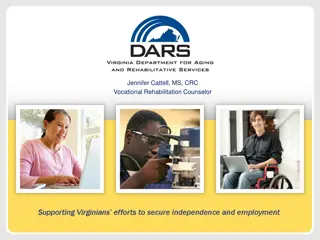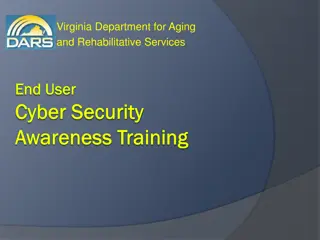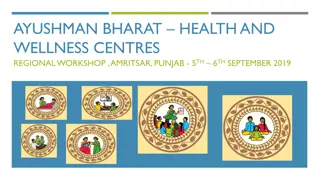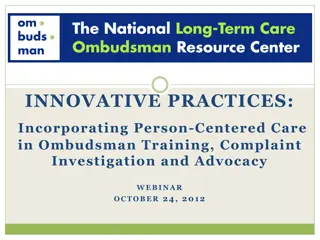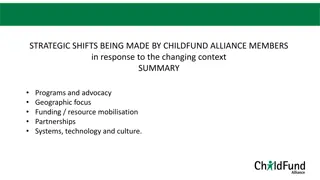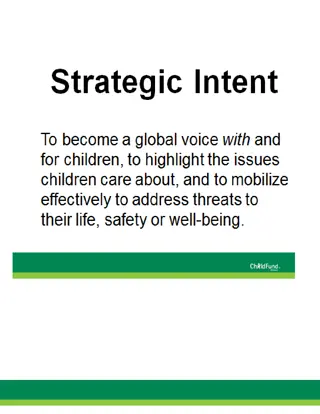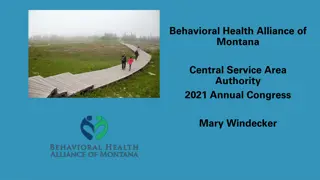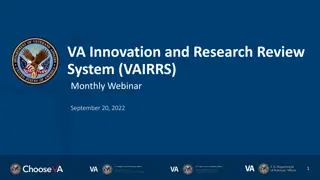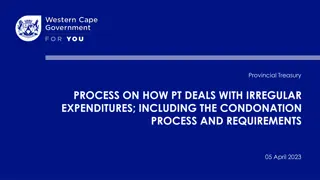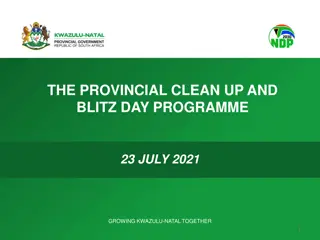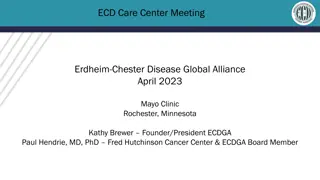Rehabilitative Care Alliance Provincial Webinar Overview
The Rehabilitative Care Alliance (RCA) is hosting a provincial webinar on April 26 and May 2, 2018, focusing on defining frameworks for rehabilitative care and its implementation in practice. The agenda includes discussions on bedded and community-based levels of care, patient placement, and RCA's mandate to standardize care in Ontario. Initiatives involve capacity planning, best practices for frail seniors, and standardized evaluations. Participants can join via phone for audio and engage in post-webinar discussions on the RCA website.
Download Presentation

Please find below an Image/Link to download the presentation.
The content on the website is provided AS IS for your information and personal use only. It may not be sold, licensed, or shared on other websites without obtaining consent from the author. Download presentation by click this link. If you encounter any issues during the download, it is possible that the publisher has removed the file from their server.
E N D
Presentation Transcript
Rehabilitative Care Alliance Provincial Webinar April 26/May 2, 2018 12:10 1:00 p.m. For audio, you must call in by phone: (416) 764-8673 or Toll Free: 1-888-780-5892 Passcode: 7677451# Telephone lines open at 12:00 p.m. and will be muted Webinar begins at 12:10 p.m.
How to participate in the webinar For audio, you must call in by phone: (416) 764-8673 or Toll Free: 1-888-780-5892 Passcode: 7677451# Telephone lines are muted The webinar is being recorded and will be posted to the RCA website within 1 week Questions may be entered into the chat function here for discussion www.rehabcarealliance.ca 2
Agenda Brief overview of the RCA Rationale for Definitions Frameworks for Rehabilitative Care Understanding the Definitions Frameworks for Rehabilitative Care Key Features Where does the patient fit? o Bedded levels of rehabilitative care o Community-based levels of rehabilitative care What does implementation of the Definitions Frameworks mean in practice? www.rehabcarealliance.ca 3
RCA Mandate Work with LHINs, provincial stakeholders, client and caregiver representatives to strengthen and standardize rehabilitative care in Ontario, through: o Better planning o Improved performance management and evaluation o Increased integration of best practices across the care continuum www.rehabcarealliance.ca 4
RCA Initiatives Implement standardized levels of rehabilitative care across the province Definitions Assess & Restore/ Frail Seniors Develop care pathways/processes to standardize best practice rehab care for frail older adults Apply a standardized approach to capacity planning for rehabilitative care Capacity Planning System Evaluation Standardize evaluation of rehabilitative care services Implement standardized rehabilitative care best Address data gap to help inform contribution to bundled care & support capacity planning practices for hip fracture and TJR QBP Best Practices Implement standardized rehabilitative care best practices for hip fracture and TJR to bundled care & support capacity planning Address a data gap to help inform rehab contribution Outpatient/Ambulatory www.rehabcarealliance.ca 5
Rationale for the Definitions Frameworks www.rehabcarealliance.ca 6
Rehabilitative Care Before www.rehabcarealliance.ca 7
Rehabilitative Care Before Lack of standardization and clarity across the province regarding: The focus and clinical components of rehabilitative care The eligibility criteria forrehabilitative care Confusion for patients/families & referrers Limited ability to produce and understand data on resource utilization compromising our understanding of system and patient level outcomes. www.rehabcarealliance.ca 8
Definitions Frameworks for Levels of Rehabilitative Care Key Features www.rehabcarealliance.ca 9
Definitions Frameworks A shared understanding among patients, families and referring professionals on the levels of rehabilitative care including: a definition of restorative potential eligibility criteria goals of care patient/client characteristics medical/health care resources intensity of therapy for each level Definitions provide www.rehabcarealliance.ca 10
Definitions Frameworks 1. Definitions Framework for Bedded Levels of Rehabilitative Care o Hospital-based inpatient rehab beds / some complex continuing care beds / convalescent care beds Does not include beds within CCC where rehabilitative care is not the primary purpose/focus of care (e.g., Palliative Care, Respite, Behavioural programs, ALC units) www.rehabcarealliance.ca 11
Bedded Levels of Rehabilitative Care DEFINITIONS FRAMEWORK FOR BEDDED LEVELS OF REHABILITATIVE CARE Bedded Levels of Rehabilitative Care (i.e. Hospital-based designated inpatient rehab beds and complex continuing care beds as well as convalescent care/restorative care beds within LTCH) Rehabilitation (Low to high intensity) Long Term Complex Medical Management Short Term Complex Medical Management Stabilization & Progression Activation/ Restoration Functional Trajectory Progression Progression Maintenance Level of Care - Goal Target Population Characteristics Functional Characteristics Patient Estimated Average LOS Discharge Indicator Medical Care Medical/Allied Resources Health Nursing Care Therapy Care Intensity of Therapy www.rehabcarealliance.ca Reporting Tools 12
Definitions Frameworks 2. Definitions Framework for Community-Based Levels of Rehabilitative Care o LHIN or MOHLTC-funded programs with a primary rehabilitative care focus provided by or under the supervision of regulated health professionals. o Includes programs with a primary rehabilitative care focus towards progression or maintenance of functional status. www.rehabcarealliance.ca 13
Community-Based Levels of Rehabilitative Care Part A Note: Wellness/health promotion programs provided by non- regulated health professionals are beyond the scope of the framework. However, these programs help individuals manage health problems and support community re- integration and should be considered by providers when discharge planning and transitioning clients to self-management activities. CONCEPTUAL DEFINITIONS FRAMEWORK FOR COMMUNITY LEVELS OF REHABILITATIVE CARE These definitions pertain to publicly-funded programs (i.e. LHIN or MOHLTC funded) with a primary rehabilitative care focus provided by or under the supervision of regulated health professionals. Part A: Determine which level of community-based rehabilitative care would meet the needs of the patient/client Functional Trajectory Progression Maintenance Level of Care - Goal Target Population / Functional Characteristics Characteristics Patient Transition Indicator Professionals Healthcare Medical Care Medical / Nursing/Therapy Care Reporting Tools Detailed definitions for each cell available at http://rehabcarealliance.ca/definitions-1 www.rehabcarealliance.ca 14
Bedded Levels of Rehabilitative Care www.rehabcarealliance.ca 15
Rehabilitation vs. Activation/Restoration Where does the patient fit? www.rehabcarealliance.ca 16
Functional Trajectories/Goals Rehabilitation (Low to high intensity) Activation / Restoration Functional Trajectory Progression To develop and provide a time limited coordinated, inter- professional rehabilitation plan of care ranging from low to high intensity To promote activity, increase strength, endurance, independence and ability to manage activities of daily living by providing access to therapies with a focus on restoring function. Level of Care - Goal Uses a combined and coordinated use of medical, nursing and allied health professional skills. Uses functional practice opportunities, wellness and self-care activities that support the return of patients to their previous living environment or other appropriate community environment. www.rehabcarealliance.ca 17
Target Population Activation / Restoration Rehabilitation (Low to high intensity) Pts are medically stable and physically and cognitively able to participate in restorative activities* designed to enable pts to return home by increasing their strength, endurance and ability to manage ADLs following an acute care hospital stay or admission from the community Pts are medically stable with significantfunctional impairments and require and are able to participate in a comprehensive inter-professional rehabilitation program at a low to high intensity to enhance functional & cognitive ability. Target Population *Assistance with walking and self care and participate in individual and/or group exercise programs, recreational activities and group dining www.rehabcarealliance.ca 18
Functional Characteristics Activation / Restoration Rehabilitation (Low to high intensity) Achievement of goals primarily addressed through: exercise recreational activities. Functional Characteristics Achievement of goals requires: daily interventions frequent/ daily re-assessment by regulated health professionals a coordinated team approach by a dedicated/in- house interprofessional team of Regulated Health Professionals Goal achievement does not requiredaily access to a comprehensive, interprofessional rehabilitation team using a coordinated team approach. www.rehabcarealliance.ca 19
Functional Characteristics Activation / Restoration Rehabilitation (Low to high intensity) Although the patient s functional tolerance may fluctuate, the patient has the cognitive ability and physical tolerance to participate in restorative activities provided at an intensity available at this level of care Although the patient s initial functional tolerance may fluctuate, the patient has the cognitive ability and the physical tolerance to participate in and progress through low or higher intensity rehabilitation Functional Characteristics Patients are expected to have a discharge location, typically home. Some patients could be preparing for active rehabilitation before returning home. Pts are expected to return to their previous living environment or other appropriate community environment www.rehabcarealliance.ca 20
Medical and Nursing Care Activation / Restoration Rehabilitation (Low to high intensity) Physician assessment on admission 24/7 on-call physician Medical Care Access to daily physician or applicable alternate designate assessment is available if needed Access to weekly physician follow-up/oversight Nursing Typically, requires up to 3 hours nursing care per day; however, some patients may require up to 4 hours per day Requires nursing care 2 hours/day. Care www.rehabcarealliance.ca 21
Therapy Care Activation / Restoration Rehabilitation (Low to high intensity) Direct daily therapy (in alignment with treatment plan and patient tolerance) is provided by regulated health professionals within a dedicated, interprofessional team model of care with expertise in rehabilitation populations. Delivered largely by non-regulated health professionals, who may or may not be under the direction/supervision of a regulated health professional to provide programming for restoration/activation Therapy Care Establishment of achievable treatment goals, the daily/frequent assessment and documentation of the functional status of patients and the occurrence of regular case discussion amongst treating practitioners. www.rehabcarealliance.ca 22
Therapy Care Activation / Restoration Rehabilitation (Low to high intensity) The interprofessional team of regulated health professionalsshould include: clinical dietitian, discharge planner (as filled by: social worker, discharge planner/coordinator, patient flow coordinator, etc.), nurse, occupational therapist, pharmacist, physiotherapist, physiatrist and/or geriatrician, social worker, speech-language pathologist. Delivered largely by non-regulated health professionals, who may or may not be under the direction/supervision of a regulated health professional On-site therapy resources are limited to: o Physiotherapy (limited to providing an exercise program of 15 min/day on a 1:1 basis) o Non-regulated Activation / Recreational staff o Nursing o Social worker o Dietitian o Occupational Therapy and Speech Language Therapy may be available on a consultation basis. Therapy Care Ideally, consultation is available from all of the following professionals: Chaplain/pastoral care provider, chiropodist, psychiatrist and/or geriatric psychiatrist, psychologist and/or neuropsychologist, recreation therapist, neurologist and wound care specialist. www.rehabcarealliance.ca 23
Intensity of Therapy Care Activation / Restoration Rehabilitation (Low to high intensity) To accommodate differing levels of tolerance among patients on admission and increases in tolerance during the inpatient stay, the intensity of rehab may vary from low to high intensity (from at least 15 30 minutes of therapy 3x per day to 3 hours per day) up to 7 days per week. Restorative activities may be provided in a group or 1:1 setting throughout the day (i.e. 30 minutes or up to 2 hours per day) 5 7 days per week Intensity Ideally therapy hours are increased as the patient s tolerance increases to achieve all patient goals. www.rehabcarealliance.ca 24
High vs. Low Intensity Rehab Determination of whether the patient is appropriate for high or low intensity would depend on consideration of: o Activity tolerance level to participate in therapy in terms of minutes per day and number of days per week o Length of stay to achieve rehab goals o Best practice guidelines o Availability of rehabilitative care resources in high vs. low intensity programs www.rehabcarealliance.ca 25
Short and Long Term Complex Medical Management Where does the patient fit? www.rehabcarealliance.ca 26
Functional Trajectories/Goals Short Term Complex Medical Management Long Term Complex Medical Management Functional Trajectory Stabilization & Progression Maintenance To provide medically complex and specialized services over an extended period of time to maintain, slow the rate of or avoid further loss of function where in the opinion of the attending physician, the patient requires chronic/complex continuing care and is, and will continue to be more or less a permanent resident in the hospital .* To provide medically complex and specialized services to avoid further loss of function, increase activity tolerance and progress patient so that the patient may be able to go home OR may be able to be discharged to another level of (rehabilitative) care wherever possible. Level of Care - Goal * MOHLTC, Hospital Complex Continuing Care (CCC) Co-payment, Questions and Answers, Resource to LHINs and Hospitals, Updated May 2010. www.rehabcarealliance.ca 27
Target Population Long Term Complex Medical Management Short Term Complex Medical Management Pts are medically complex, with long-term illnesses or disabilities typically requiring: o Ongoing medical / nursing support o Skilled, technology-based care not available at home or in long-term care facilities. o Assessment and active care management by specialized inter-professional teams. On admission, pts typically have limited physical and/or cognitive capacity to engage in a rehabilitative care program due to medical complexity. Target Population However, it is believed that the patient has restorative potential and that this level of care will provide the opportunity to optimize restorative potential where possible and assess the patient s rehabilitative care needs following further stabilization of medical condition. May require access to a physician on a 24/7 on-call basis www.rehabcarealliance.ca 28
Functional Characteristics Long Term Complex Medical Management Short Term Complex Medical Management Patients are medically stable (although the patient may be at risk for an acute exacerbation) such that there is: a clear diagnosis/prognosis; co-morbidities have been established; no undetermined acute medical issue(s) (e.g. excessive shortness of breath, congestive heart failure); vital signs are stable; medication needs have been determined; an established plan of care; Functional Characteristics Some patients may experience temporary fluctuations in their medical status, which may require changes to medications/plan of care. www.rehabcarealliance.ca 29
Functional Characteristics Long Term Complex Medical Management Pts require skilled nursing and medical care that cannot be met on an ongoing basis in LTC or other community setting Short Term Complex Medical Management Pts require skilled nursing and medical care that cannot be met on an ongoing basis in other levels of rehabilitative care Functional Characteristics Pts for whom it is anticipated as their medical condition and tolerance improves, that they will be able to engage in limited rehabilitative activities Pts for whom it is anticipated, due to limited physical and/or cognitive capacity, that the degree of additional functional gain will be low www.rehabcarealliance.ca 30
Estimated LOS and Discharge Indicator Long Term Complex Medical Management Short Term Complex Medical Management Up to 90 days Will remain in this level because the patient s functional status/medical care needs cannot be met in the community. Estimated LOS* *The rehabilitative care team in the bedded program will inform patients after admission about the anticipated length of stay of the specific program to which the patient has been admitted. The patient is designated to be more or less a permanent resident in the hospital and will remain until the medical/functional status changes so as to allow the patient to safely transition to another level of care or to the community. Note Discharge Medical/functional recovery so as to allow patient to safely transition to the next level of rehabilitative care or an alternative level of care environment. Indicator At each transition point, mechanisms for the coordination and communication of the post- discharge rehabilitative care plan with the receiving provider(s) and patient and families/caregivers should be in place to support a successful transition. www.rehabcarealliance.ca 31
Medical and Nursing Care Long Term Complex Medical Management Short Term Complex Medical Management Physician assessment on admission 24/7 on-call physician Medical Care Access to weekly physician follow-up/oversight. Up to 8 monitoring visits per month. Access to scheduled physician care/daily medical oversight as clinically necessary Nursing Care Requires nursing care > 3 hours/day www.rehabcarealliance.ca 32
Therapy Care & Intensity Long Term Complex Medical Management Short Term Complex Medical Management Regulated health professionals available to maintain and maximize cognitive, physical, emotional and functional abilities through limited rehabilitative activities* Therapy Care Regulated health professionals are available to maintain and optimize cognitive, physical, emotional and functional abilities *e.g. regain sitting balance, improve upper extremity strength and coordination, increase transfers and functional mobility, assess and train patient/caregiver on optimal positioning, learning how to sequence activities through functional tasks, self-care with assistance, being up/walking for short periods Regulated health professionals are available to maintain and optimize cognitive, physical, emotional and functional abilities. Intensity Up to 1 hour of rehabilitative activities as tolerated based on the patient s medical condition/ tolerance. www.rehabcarealliance.ca 33
Community-Based Levels of Rehabilitative Care Where does the patient fit? www.rehabcarealliance.ca 34
Key Features: Progression & Maintenance Focused Rehab Healthcare Professionals: Provided by or under the supervision of a regulated health professional or by an integrated, inter-professional team of regulated health professionals individual or group format to maximize community integration. www.rehabcarealliance.ca 35
Key Features: Progression & Maintenance Focused Rehab Transition Indicator: Rehab goals met or reasonably equivalent gains can be achieved independently or with caregiver or self-care/wellness/health promotion classes or plateau has been reached Medical Care: Medical care/management may be provided by: primary care practitioner (e.g. Family Physician, Nurse Practitioner) as well as by those focused on rehabilitative care (e.g. physiatrists, geriatricians, paediatricians and/or other specialists) www.rehabcarealliance.ca 36
Key Features: Progression-Focused Rehab Functional Goal: Assessment and time limited treatment through a single service or coordinated, inter-professional approach to: restore or maximize functional abilities promote adaptation of/to home support timely transition from or prevent admission to acute/rehab hospital or to provide opportunity to learn/practice in a familiar, stimulating and supportive environment www.rehabcarealliance.ca 37
Key Features: Progression-Focused Rehab Target Population: Individuals who after acute episodes or worsening of symptoms have decreased function and require rehabilitative care to achieve functional goals, increase self-management skills and maximize community reintegration. Individuals who do not require a bedded level of care. www.rehabcarealliance.ca 38
Key Features: Maintenance-Focused Rehab Functional Goal: To prevent functional decline/injury or maintain functional performance (e.g. strength, mobility, balance, falls prevention etc.) through individual assessment/treatment and/or periodic assessment/oversight of care plan by individual regulated health professional or interprofessional/team. www.rehabcarealliance.ca 39
Key Features: Maintenance-Focused Rehab Target Population: Individuals with reduced functioning (e.g. neuromuscular, musculoskeletal and cardio-respiratory etc.) who require rehabilitative care to prevent a decline in functional status and/or to promote their capacity to remain at home. Individuals include those living in the community (home, retirement homes, LTCHs) who have functional goals that can be met by participating in group intervention, which could include falls prevention classes. www.rehabcarealliance.ca 40
What Does Implementation Mean in Practice? www.rehabcarealliance.ca 41
Implementation Means: 1. Programs have been re-categorized in your organization according to the levels of rehabilitative care Admission criteria for rehabilitative care programs are aligned with the Eligibility Criteria and Definition of Restorative Potential 2. www.rehabcarealliance.ca 42
Categorization of Programs/Service Categorizing programs/services by appropriate level is important because: Facilitates review to improve alignment of admission criteria, program components, health human resources etc. with the definitions in the frameworks Needed for applying the required, standardized RCA naming convention Enables customization of several RCA resources that are based on the levels of rehabilitative care (e.g., Patient/Caregiver Information Letters on Bedded Levels of Rehabilitative Care) Improves consistency in system-wide reporting and data accuracy www.rehabcarealliance.ca 43
Implementation Means: The standardized RCA naming convention has been applied to rehabilitative care programs in your organization 3. www.rehabcarealliance.ca 44
Using the RCA Standardized Naming Convention The standardized naming convention: minimizes variation in descriptors and provides a shared understanding of rehabilitative care. will be used for reporting and navigation purposes in future (e.g., Access to Care Wait Time Information System-ALC reporting; in navigation tools such as Rehab Finder; Resource Matching &Referral systems). is applied at the front end of existing program names. o Organizations can continue to use current names with patients/families www.rehabcarealliance.ca 45
RCA Standardized Naming Convention Bedded Programs Low Intensity Rehab High Intensity Rehabilitation Community-Based Programs Rehabilitation: Convalescent Care (governed by LTCH Legislation) Activation/Restoration (hospital-based programs) Activation / Restoration: Name of program/service Progression: Short Term Complex Medical Management Long Term Complex Medical Management Complex Medical Management: Name of program/service Maintenance: www.rehabcarealliance.ca 46
RCA Standardized Naming Convention www.rehabcarealliance.ca 47
Implementation Means: 4. RCA resources/tools have been customized to reflect programming in organizations/regions www.rehabcarealliance.ca 48
Customization of RCA Resources Patient/Caregiver Information Letters for Bedded Levels of Rehabilitative Care (http://rehabcarealliance.ca/definitions-1) Can be customized to reflect bedded rehabilitative care programs in your organization/region Provide brief, patient-friendly, standardized information describing the bedded levels of care Separate letters for the Rehabilitation, Activation/Restoration and Short Term Complex Medical Management levels. Note: There is no letter for the Long Term Complex Medical Management level as its functional trajectory is not progression. RCA Patient & Caregiver Advisory Group reviewed the letters and found them to be excellent and helpful to patients & caregivers. 49
Patient/Caregiver Information Letter Rehabilitation Level www.rehabcarealliance.ca 50
